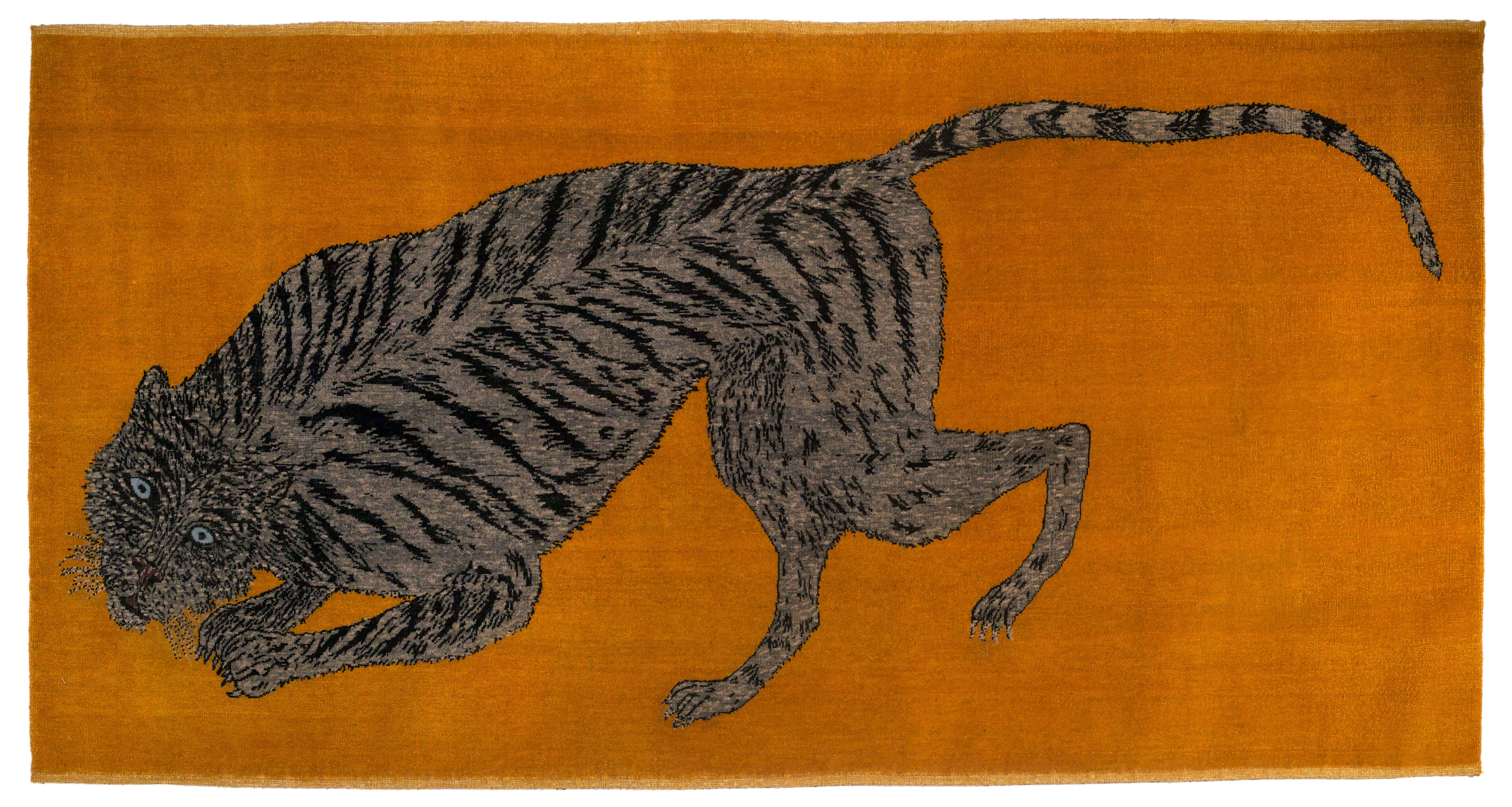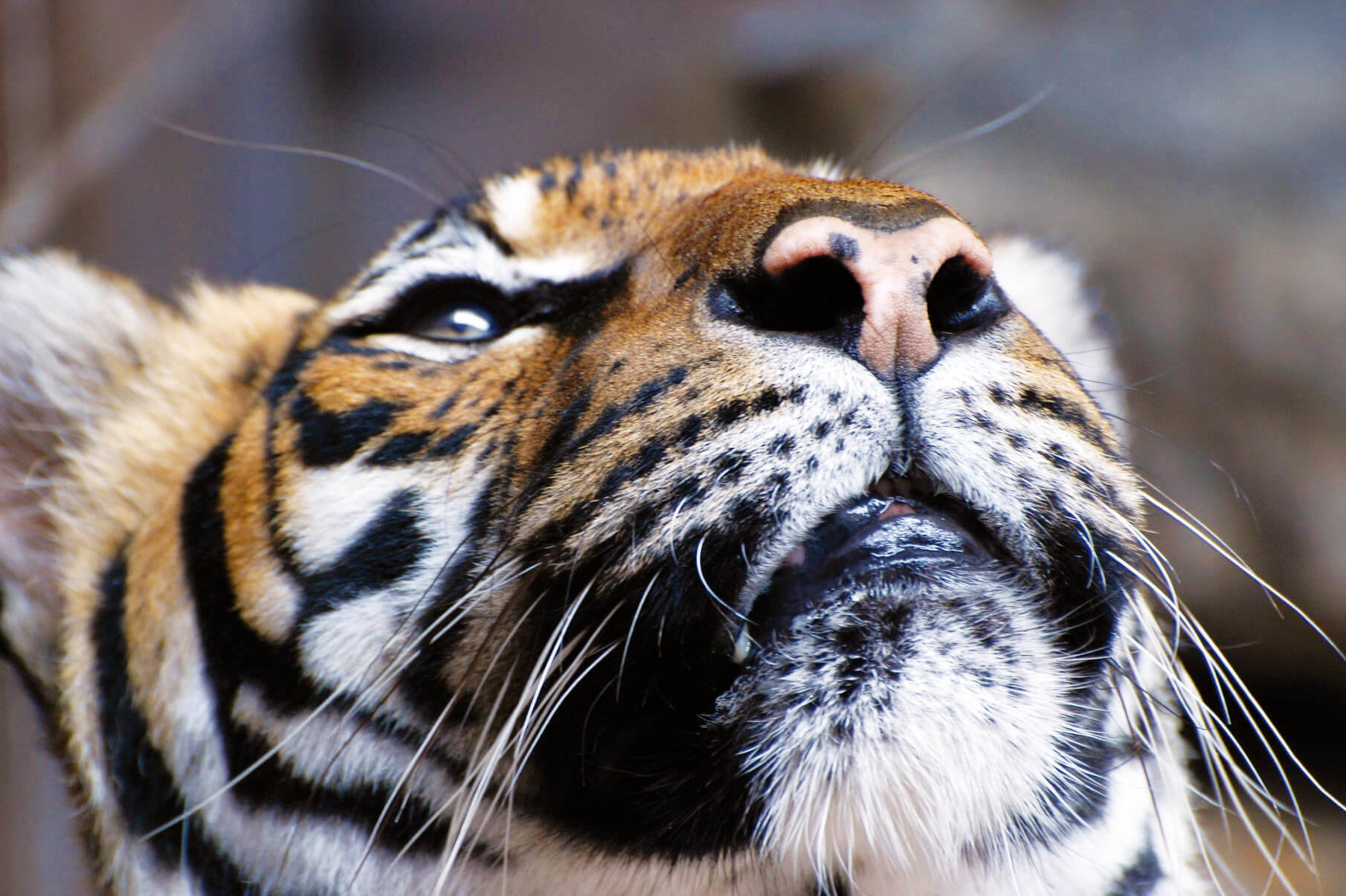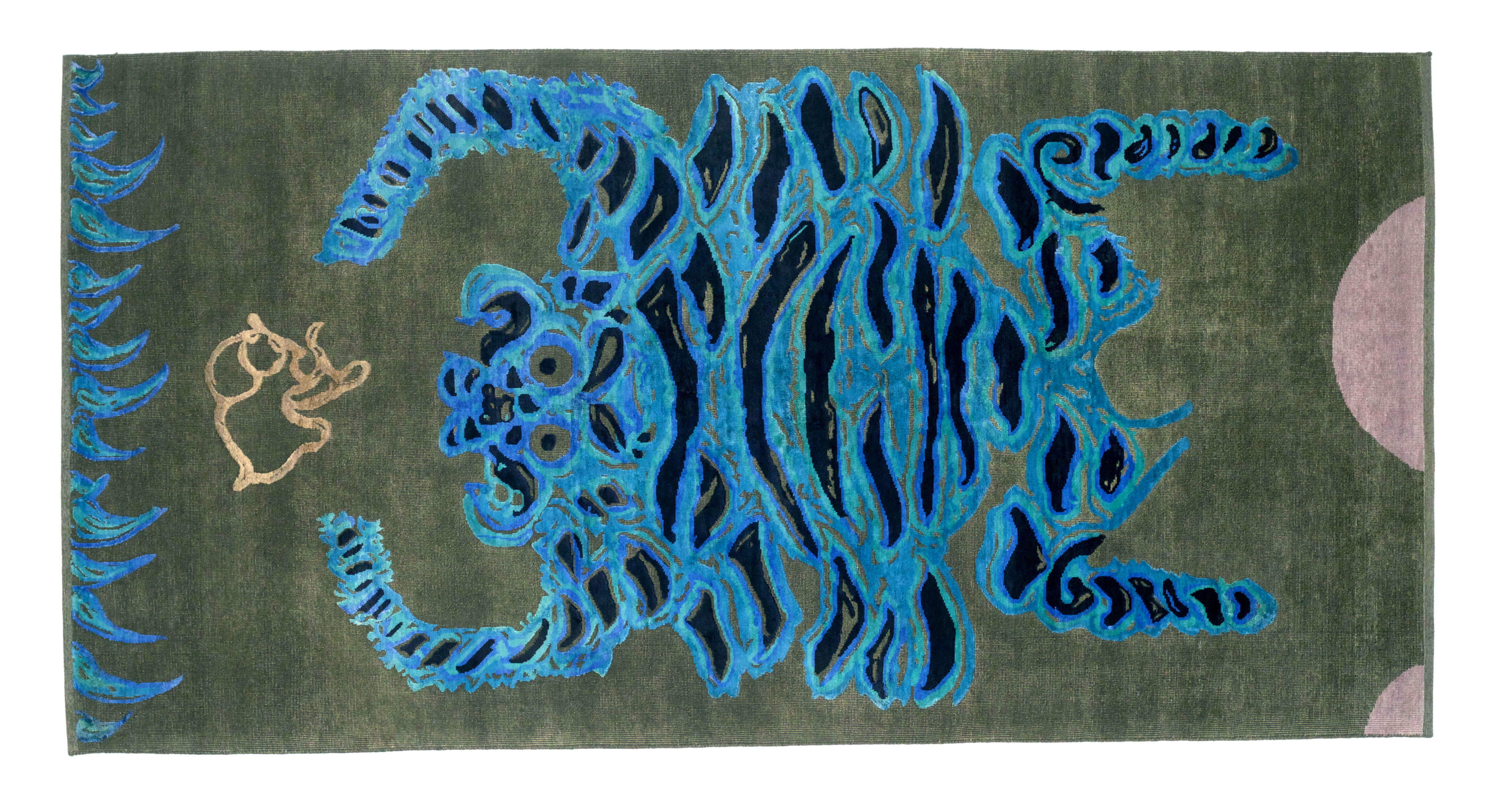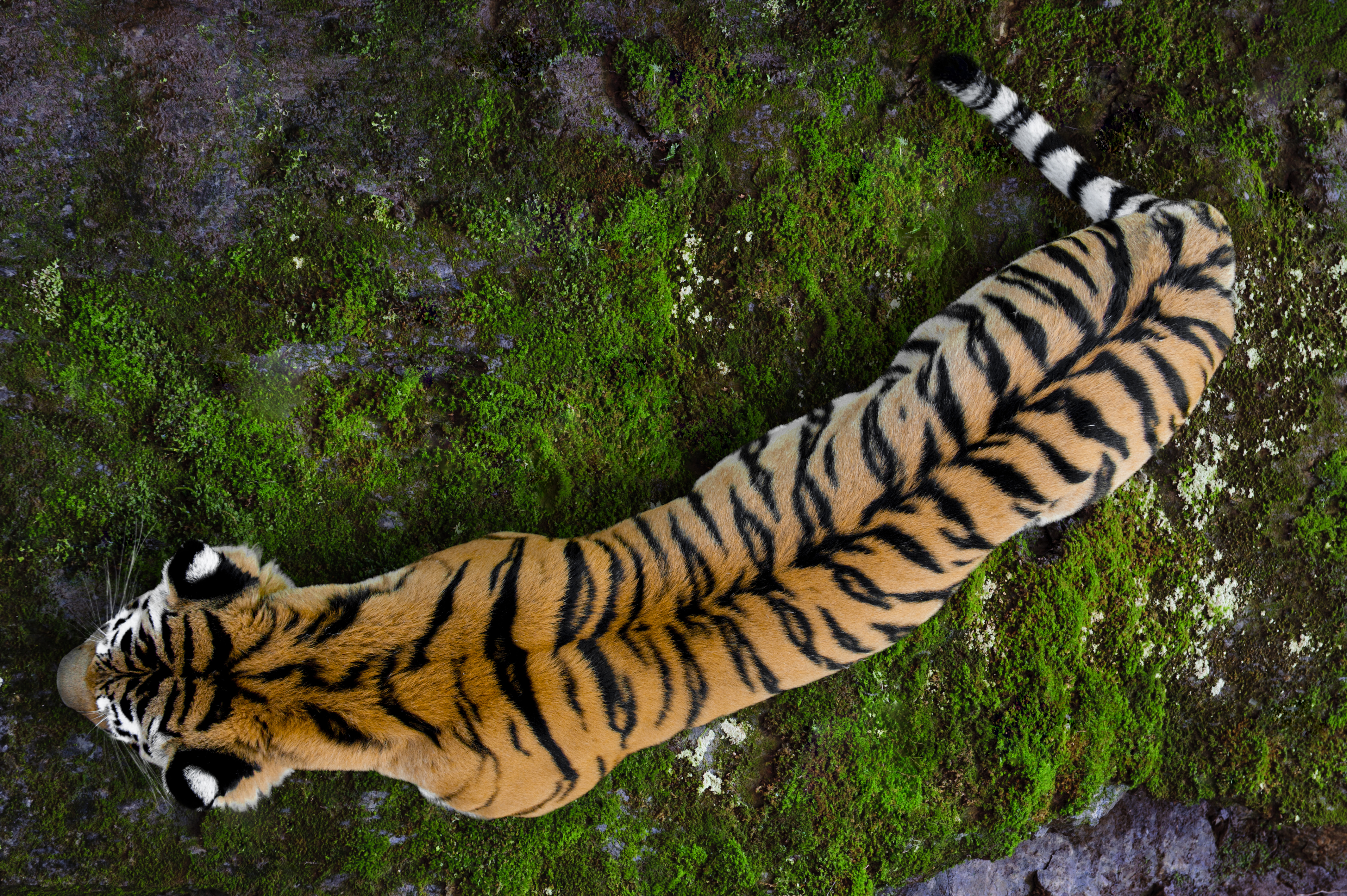With over 95 per cent of their historical range taken away from them over the last century, tigers are having a tough time. Sophie Breitsameter speaks to Heather Sohl, Tiger Trade Leader at the World Wildlife Fund (WWF) about its latest conservation project, the ambitious Tomorrow’s Tigers
“I’ve been passionate about animals all of my life, I was even a World Wildlife Fund (WWF) member when I was a child” says Heather Sohl, Tiger Trade Leader at WWF. “So many species and areas of conservation are close to my heart, and tigers have always been a favourite.” Today, the WWF goes far beyond animal conservation, working to address problems facing freshwater, oceans and forest systems, sustainable consumption and development, local communities and climate change. “To me that is invaluable as we all live on this planet together, its systems are all interconnected, and we cannot hope to protect wildlife without improving the health of our planet as a whole,” Sohl says.
When we meet with Sohl, it is to talk about Tomorrow’s Tigers, a new fundraising project produced by curatorial collective Artwise. Its aim is to raise awareness and funds in support of WWF’s TX2 global goal to double tiger numbers in the wild by 2022. The project features specially-commissioned, limited edition rugs by 11 internationally-renowned artists including Anish Kapoor and Gary Hume, all of whom have taken inspiration from the fabled Tibetan tiger rug design, which in Tibet and Mongolia are believed to give strength and power to the owner, as well as the natural brilliance of tigers in the wild.
“In 1988, [collector and jeweller] Mimi Lipton organized an incredible exhibition at the Hayward Gallery in London, called The Tiger Rugs of Tibet. The exhibition brought together an impressive collection of rare woven Tibetan tiger rugs and was the inspiration behind our project,” explain Susie Allen and Laura Culpan of Artwise. “We were struck by the way Tibetan weavers interpreted the spirit of the tiger in abstract and stylized designs. The original tiger rugs were used by monks in Tibet, during meditation; they believed the spirit of the tiger would protect them. Now we have to take the steps to help protect this species in the wild.”
These exclusive designs have then been interpreted by rug-specialists, Christopher Farr and a team of master craftsmen, using a range of traditional techniques to create this collection of stunning art rugs. Here, we speak to Sohl to find out about the progress of the project, what is happening next to reach the TX2 target and the highs and lows of working in conservation.

Kiki Smith. Hand-knotted hand-dyed wool. 100 x 200 cm. Courtesy of the artist and Timothy Taylor Gallery, London. Image courtesy Dan Fontanelli.
So what’s the tiger status quo?
I find it incredible that the tiger is so loved and so well-known globally – used as a logo, emblem and inspiration for sports teams, cereal, children’s stories, songs, petrol, national pride and much more. And yet, its populations have declined by over 95 per cent since the beginning of the last century and still face numerous threats. There are only around 3,900 wild tigers remaining.
Is it all doom and gloom?
Well, I love that tigers are also an icon of hope – their numbers were as few as 3,200 in 2010. If given safe and healthy habitats, protected from poachers and with enough prey we will hopefully continue to see their numbers bounce back with conservation efforts.
How successful has TX2 been so far?
TX2 is one of the most ambitious conservation goals ever set for a single species. It is meant to disrupt a business-as-usual mindset and approach global tiger conservation with innovation and scale in mind. It aims to double the number of tigers in the wild – from an all-time low of only around 3,200 individuals in the 2010 to around 6,000 by 2022, the next Chinese Year of the Tiger. Committed to by 13 tiger-range governments, the TX2 goal is driven by global efforts involving governments, businesses, international organizations and civil society groups across the world.
What other factors are involved?
Beyond tiger numbers, the long-term survival of tigers relies on our ability to safeguard the wild spaces where they roam to ensure tigers are safe from poaching, the ecosystem health of their habitats is maintained, and that human-tiger conflict is adequately managed. Together with our partners, WWF is supporting governments to achieve – and surpass – global standards for achieving Zero Poaching, for managing human-wildlife conflict through holistic approaches, and for managing critical areas for tiger conservation. We are also supporting the professionalization of rangers through training, advocating for their basic welfare and equipping them with the necessary technology required.
We are seeing more governments work towards these aims, which is an encouraging trend. Ultimately, the success of TX2 relies on the leadership of the highest levels among tiger-range governments.
What are you working on next as part of TX2?
Much of the historical range lost by tigers has been converted or claimed by growing human populations. As we move towards our goal, there is likely to be an increased competition for space with people. We need to approach this issue comprehensively, from compensating local communities, to implementing mitigation strategies that reduce the risk of conflict.
Meanwhile, we must continue to safeguard the world’s wild tigers from the exploitation that threatens to wipe out the species. This includes working along the entire trade chain, as there is no silver bullet here, so we are working to stop the poaching, the trafficking and the demand, which is driving the killing.

The Indochinese tiger (Panthera tigris corbetti) is only found in the Greater Mekong region of Southeast Asia, including Cambodia, Myanmar, Laos, Thailand, and Vietnam.
The tiger population in Nepal has nearly doubled in the last decade. Tell us about how this have been achieved.
For the first time in over a century, the global decline of wild tiger numbers has halted and may even be on the rise. In Nepal, as you say, wild tiger populations have nearly doubled in less than a decade – thanks to political will, professional rangers who are able to provide strong law enforcement in protected areas, and local communities who are engaged as stakeholders of tiger conservation.
Nepal has shown strong political commitment towards tiger conservation. As the first country to achieve global standards in managing tiger conservation areas, an accreditation scheme governed by the Conservation Assured Tiger Standards (CA|TS), Nepal’s ability to adopt innovative tools and approaches towards tiger conservation is a key factor in their success.
Nepal’s efforts extend beyond tigers, too, right?
Yes, and in May 2018, Nepal celebrated a new benchmark with the achievement of 365 days of zero poaching of rhinos on five occasions between 2011 and 2018. This is another excellent example of real conservation change that can be achieved when a country unites and coordinates the efforts of the government, enforcement agencies, conservation partners and local communities.
With four more years to go, the TX2 goal of doubling tiger numbers globally can only be achieved if all tiger range countries step up and commit to a similar level of excellence, especially in Southeast Asia, where tigers have suffered the most dramatic decline in the past decade.
What does it feel like, getting up close and personal to such rare and beautiful tigers?
Many years ago, I was fortunate enough to travel to Ranthambore National Park in India. I’d seem a tantalizing glimpse of a tiger through the long grass while on safari before, but this time my colleague and I were hoping for a good sighting. We had spent three days, at dawn and dusk, in a jeep looking for that elusive moment with a tiger. As the hours passed you couldn’t help but think how over 100 years ago there were estimated to be around 100,000 tigers and how coming across tigers in such suitable habitat would have surely have been easier then.
Our final drive came, and we worried we would go home disappointed, but finally we saw at a distance a young male tiger. He was a strong, magnificent example of his species. We saw him walk into the forest, and then he crossed the dirt road right in front of us. I felt great excitement at seeing such a beautiful creature calmly going about his day, scenting a tree, ignoring the tourists who were busy snapping away with their cameras (us included!). But it also brought absolute disbelief at how humans could want to kill and remove this majestic animal from this, his rich and delicately balanced habitat, so that they and those along the trade chain could make a profit, to ultimately help inflate the status of those wanting to leave his skin hanging on a wall and use his bones in health tonics. Ultimately, it was the most motivating experience, inspiring me and the others there to keep working the late hours, advocating for change and doing all we can to make sure this and all tigers can be protected.
What has been your proudest achievement to date?
We’ve seen an unprecedented rise in recent years in poaching and the illegal wildlife trade. Its growth is driven by increased wealth and affluence in demand countries such as China, and involves organized criminal networks. A key problem has been the lack of political prioritization and resources to tackle this serious crime effectively. I was therefore proud to work with the UK Government and others in the development of the London Conference on Illegal Wildlife Trade held in February 2014. The result was a strong declaration agreed by 41 governments in attendance setting out key actions to take, injecting much needed political momentum to efforts to stop the illegal wildlife trade. That process has continued with other conferences hosted in Botswana and Hanoi, and just last October the UK government again hosted another illegal wildlife trade conference with over 1,300 people from 70 countries representing governments, organizations and businesses. Only by achieving strong political will and working together will we be able to stop this devastating trade.

Gary Hume, Water Tiger. Hand-knotted, hand-spun, hand-dyed wool and silk. 200 x 100 cm. Image courtesy Dan Fontanelli.
Tell us about some of the challenges in raising awareness?
We all know what a tiger is, or at least what it looks like; many of us have grown up on stories and cartoons about tigers, visited them in zoos, admired them in art or in wildlife documentaries. Unfortunately, despite their charisma and iconic status, not all of us recognize that tigers are endangered – that they are at risk of extinction in the wild.
Ironically, our fascination and love for tigers can be exploited in ways that harm them. In Asia, there are more tigers found in captivity than in the wild globally. At least 6,000 tigers are estimated to be kept in breeding facilities, used for commercial and entertainment purposes, where tourists are encouraged to take ‘selfies’ with captive tigers that are most often drugged.
Many of these captive facilities could also be ‘tiger farms’, where tigers are killed for their parts to enter the illegal wildlife trade. According to a study by TRAFFIC, the parts of at least two tigers are seized each week on average. Among the parts seized, at least 30 per cent are estimated to come from captive facilities. The use of tiger parts, including tiger skins for decoration or in health tonics, is a direct threat to tigers in the wild.
If you are able to take a ‘selfie’ with your hand on a tiger, it is probably drugged and kept in facilities that are not contributing to conservation. By visiting these ‘tiger farms’ or places where tigers are being bred in captivity for commercial purposes, tourists may be unknowingly supporting the illegal tiger trade.
An interesting fact about tigers that we might not know?
Just like humans and our fingerprints, each tiger’s stripe pattern is unique!
All of the artworks will be on show, alongside a collection of antique tiger rugs, at Sotheby’s London from 29 January to 4 February 2019 and are made in a limited edition of 10, with profits going to support tiger conservation.
Main image courtesy of WWF. Images courtesy of Kiki Smith, Timothy Taylor Gallery, WWF and Dan Fontanelli
Like this? Then you’ll love: How Kate Brooks is using photography and film to fight animal trafficking




